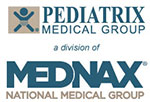NANNP Corner
Strong Work and Three Good Things
Elizabeth Welch-Carre, EdD MSN APRN NNP-BC

Let me start by saying that it was a pleasure to see everyone at the Annual Conference. I always look forward to attending the NANN conference and the NANNP Advanced Practice Registered Nurse (APRN) Summit because I am able to catch up with people I have not seen in a while; learn about new evidence-based practice, clinical practice changes, and current research related to neonates and their families; talk to vendors about new or updated products that help us care for our patients; and, of course, dance with my peers at NANN After Dark. The conference would not be possible without our membership. So, I would like to thank each of you for being members of NANN/NANNP.
I want to reiterate some of the work that the NANNP council and NANN will be doing this year. Sandra Bellini, DNP APRN NNP-BC CNE, will continue to work on the Safe Staffing white paper. This collaborative paper will provide guidance on the types of APRNs who should be providing care in Level I, II, III, and IV NICUs and who should be attending deliveries.
Barbara Snapp, DNP NNP-BC, recently revised the NANNP position statement on the DNP as entry into practice. If you have not read it, you can find it here. She also recently attended the American Academy of Pediatrics section of neonatal and perinatal medicine with Tami Wallace, past NANNP council member, in a section that focused on quality metrics in the NICU.
Some of the other NANNP liaison roles are as follows:
- Mary Whalen, DNP APRN NNP-BC, will continue to be involved with the Licensing, Accreditation, Certification, and Education (L.A.C.E.) group. This group consists of membership organizations working toward clarification and implementation of the APRN consensus model.
- Julie Sundermeier, DNP APRN NNP-BC, serves as the liaison to the Health Policy and Advocacy Task Force Committee. Periodic “Calls to Action” emails are sent out to the membership in response to policies related to infants and families.
- Kristin Howard, DNP APRN NNP-BC, is the NANNP liaison to the Annual Conference Committee and the Education Strategic Coordinating Committee for NANN.
- Bobby Bellflower, DNSc NNP-BC FAANP, and chair-elect of the NANNP Council is the liaison to the NANN Research Institute Steering Committee. She will also attend the National Task Force (NTF) meeting for NONPF in December. It is at this meeting that the educational requirements for nurse practitioners will be discussed. Bobby has created educational programs at the master’s and doctorate level for several types of APRNs, so she will be able to represent us well.
Two other big projects that will be upcoming are: 1) a position statement from NANN and NANNP about marijuana use and breastfeeding and 2) revised recommendations from NANNP about NNP-to-patient ratios. This latter project will include information from the NNP workforce survey. Data from the NNP workforce survey is expected to be available by the end of the year, and information from this survey will be shared with members in the first quarter next year.
In summary, there is some really great work that is being done by NANN and NANNP. It is important to recognize good things that are being done because we can become, at times, bogged down by the struggles we all face regularly. Yet, good things are happening around us all the time.
So that was my segue into saying how grateful I am that I was able to stand in for Cynthia Acree-Hamann, APRN CNS DNP MED NNP-BC, in her conference presentation "101 Mission Possible: Finding Joy in Work." Although I am sorry that she was unable to attend and do the presentation herself, I learned so much about how to find joy in the little things in our day-to-day lives. Often, it is noticing those moments that can change our focus.
Since the conference, I have adopted the 3 Good Things (3GT) practice. I have an app on my phone that sends me a daily reminder. The research has shown that doing this for two weeks can have a long-lasting impact on one’s sense of well-being (Seligman, Steen, Park, & Peterson, 2005; Rippstein-Leuenberger, Mauthner, Sexton, & Schwendimann, 2017).
And it only requires a few moments of time. The 3GTs do not have to be profound, these can include a baby laughing, the sun shining, a dog wagging its tail, no traffic on the drive to work—the simplest things that we sometimes do not put in the “plus” column of life. I have had many good things happen since starting 3GT. I thought I would share one of them with you: an owl that was hanging out in the tree in my front yard. I hope that all of you experience three good things today and every day.
References
Rippstein-Leuenberger, K., Mauthner, O., Sexton, J., & Schwendimann, R. (2017). A qualitative analysis of the three good things intervention in healthcare workers. BMJ Open(doi:10.1136/bmjopen-2017-015826).
Seligman, M., Steen, T., Park, N., & Peterson, C. (2005, July-August). Positive psychology progress: Empirical validation and interventions. American Psychologist, pp. 410-421.
Our Sponsor


